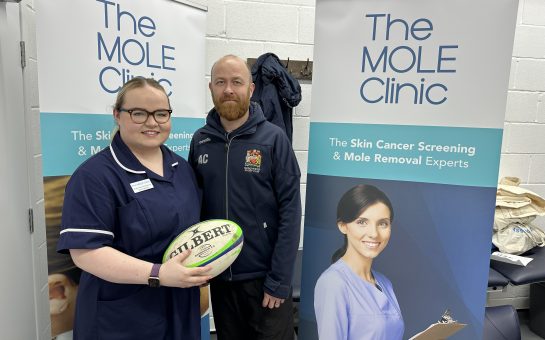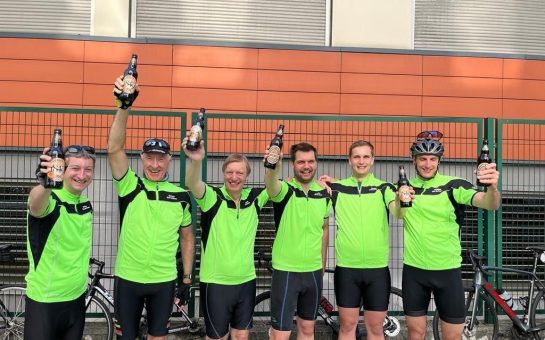Mancunians were offered the chance to take a tour through the city’s battle against cancer, and caught a glimpse of the new weapons at our disposal to help turn the fight in our favour.
The globally-renowned Manchester Cancer Research Centre in Withington marked the beginning of a walking tour last week as part of Manchester Histories Festival.
Founded in 2006, the research centre is a partnership of the Christie NHS Foundation Trust, the University of Manchester and Cancer Research UK.
The walk explored the modest beginnings of cancer research to the state-of-the-art resources we have today, including new £28.5million facility which will double the centre’s testing and analysis capacity.
The new build, which opens this August, will provide space for 150 new researchers and 100 clinical trial support staff.
But it’s a far cry from the modest beginnings of the Christie Hospital’s past.
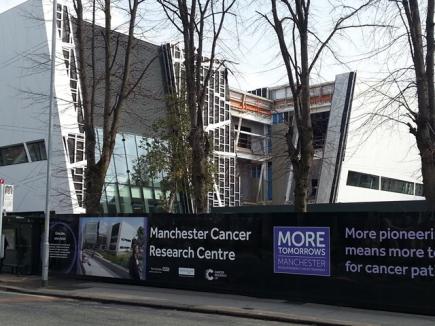
SAVING LIVES: £28.5million has been invester in the new centre
“In the late 1800s all of our power was provided by coal and we used oil lamps to see,” said Hannah Leaton, Research Engagement Manager.
The Christie Hospital opened in 1892 when it was originally called the ‘Cancer Pavillion and home for incurables’.
From as early as 1901, patients were treated for tumours with radiation treatment, which was similar to x-rays but much more powerful, proving ‘quite successful’ from 1928, Ms Leaton said.
In 1903, Marie Curie, a Polish and naturalised-French physicist and chemist, was awarded the Nobel Prize for radium pioneering research on radioactivity.
“Manchester was a real pioneer in terms of radiotherapy,” said Ms Leaton. “Radium was actually buried in the Blue John Mills in Castleton.”
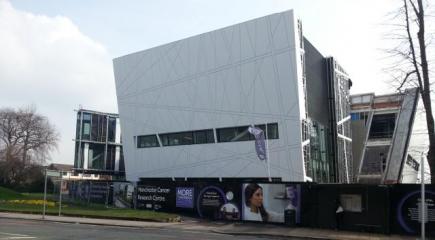
MODERN: New centre will hold 150 new researchers and 100 clinical trial support staff
Despite this, money to fund research was sparse, so much so that expenditure on brandy and whiskey far outweighed money spent on cancer research at the time, Ms Leaton said.
Interestingly, it was the alcohol producer, Sir Edward Holt of the Joseph Holt Brewery, who raised £20,000 to start the eponymous Radium Institute in 1914.
His daughter in law, Lady Margaret Holt, later left her £8 million estate to the institute when she passed away in 1997.
The company remains fiercely supportive today, naming one of their beers ‘The Paterson Ale’ in honour of the centre.
The first foundations of the Christie Hospital as it is today were laid in July 1932 and the hospital opened 15 months later.
The patient facilities were described as ‘outstanding’ as were those for staff.
“Medical students at the time said they wished there was a safe cancer they could get so they could give the facilities a personal trial,” Ms. Leaton joked.
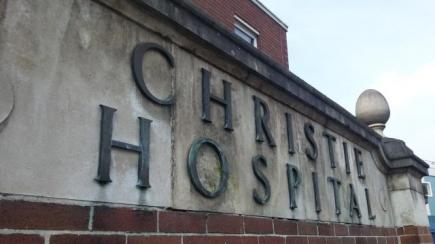
HISTORY: The Christie Hospital opened in 1892
The first stop on the tour was the Paterson Building, named after Director Ralston Paterson, the world’s leading authority on radiotherapy at the time.
Himself and his wife, Dr Edith Paterson led basic research into cancer including genetics, drug development and radiation science.
The research was carried out in a few modest huts and converted houses next to the hospital.
In 1983, the institute was ‘transformed’ by its second director, Professor David Harnden, who introduced a programme of molecular biology and studies of the human genome.
“The human genome is the complete code of what’s going on in the body”, Ms Leaton explained.
To demonstrate how different everyone is genetically, she gave those on the tour a PCT, or super taster strip.
“Pop it on your tongue”, she instructed.
Salty, savoury, sour, bitter or sweet were the variations it was possible to experience with some people experiencing none.
“I can’t taste anything at all, she confirmed. It just shows how different we all are at that genetic level.”
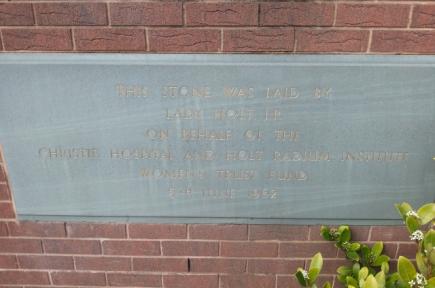
IN MEMORY:Lady Margaret Holt, left her £8 million estate to the Radium Institute
Next stop was the main entrance to the modern Christie Hospital on Oak Road.
It has the largest chemotherapy unit in the world, ‘all designed in consultation with patients,’ Ms Leaton said.
The Christie Hospital was the first cancer centre ever to use the breast cancer drug Tamoxifen in 1970.
Ms Leaton confirmed that it was originally dismissed as a ‘rubbish idea’, though has now ‘successfully treated thousands of women’.
Cultured bone marrow for leukaemia was also pioneered at Christie’s in 1986.
The first single harvest blood stem-cell transplants took place in 1991, and in 1996, photo-dynamic therapy for skin cancer was also introduced.
The centre also houses a time capsule, buried by the first chemotherapy patient, 37 year old Clare Coe from Sale and first clinical trial patient Philip Simpson.
The capsule includes a photo of themselves, a bottle from the 1800s found in the centre’s foundations, a nurse’s uniform and a copy of the menu from the Christie’s dining room of the day they visited.
The capsule will be opened on the 100th anniversary of the NHS in 2048.
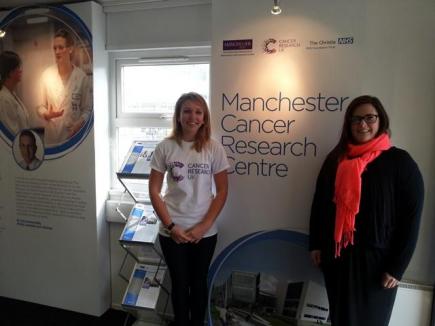
FIGHTERS: Hannah Leaton, Research Engagement Manager, (left) and Esther Walker, Head of Operations (right)
By that point, the new £28.5million facility will have hopefully pioneered some revolutionary treatments of its own, and made its own footprint in Christie’s legacy.
Still under construction, situated a little way down from the Paterson Centre on Wilmslow Road, it will include five laboratory blocks, a 150 seat lecture theatre, public cafe and breakout areas for staff.
Highlighting Christie’s long running connection with the Holt Brewery, Esther Walker, Head of
Operations, joked: “The breakout areas are important. They are designed for relaxed discussion. Some of the greatest ideas come from just sitting in the pub.”
The new centre will continue with the development of personalised medicine.
Ms Walker said: “There are over 200 different types of cancer,” Ms Walker said. “Each type has different characteristics.
“Cancer isn’t one disease, it’s many. Patients don’t respond to treatment in the same way.
“It is a disease of cells. Since I’ve started talking, your body will have generated 300 million new red blood cells.”
The fight against cancer is by no means looking like it’s drawing to a close, and it’s probably a little too premature to say that the tide is starting to swing in man’s favour.
If cancer research develops as much in the next century as it has in the last, with the help of centres like Christie’s, we might finally be able to rid this plague on mankind.


